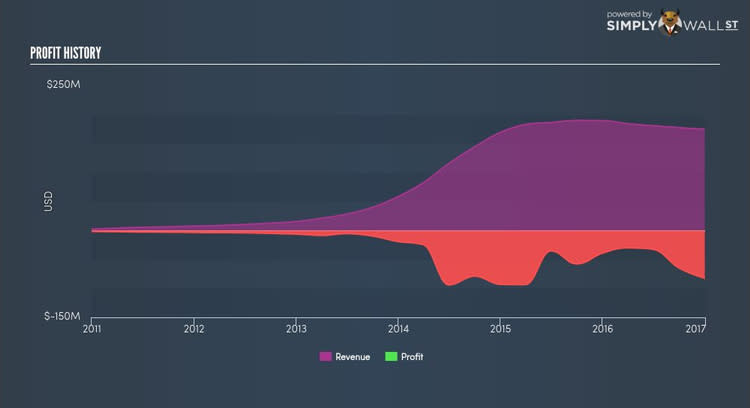What Kind Of Risk And Return Should You Expect For New York REIT Inc (NYRT)?

For New York REIT Inc’s (NYSE:NYRT) shareholders, and also potential investors in the stock, understanding how the stock’s risk and return characteristics can impact your portfolio is important. There are two types of risks that affect the market value of a listed company such as NYRT. The first risk to consider is company-specific, which can be diversified away when you invest in other companies in the same industry as NYRT, because it is rare that an entire industry collapses at once. The other type of risk, which cannot be diversified away, is market risk. Every stock in the market is exposed to this risk, which arises from macroeconomic factors such as economic growth and geo-political tussles just to name a few.
Different characteristics of a stock expose it to various levels of market risk. A popular measure of market risk for a stock is its beta, and the market as a whole represents a beta value of one. Any stock with a beta of greater than one is considered more volatile than the market, and those with a beta less than one is generally less volatile.
View our latest analysis for New York REIT
What is NYRT’s market risk?
New York REIT’s beta of 0.78 indicates that the company is less volatile relative to the diversified market portfolio. This means that the change in NYRT's value, whether it goes up or down, will be of a smaller degree than the change in value of the entire stock market index. NYRT’s beta indicates it is a stock that investors may find valuable if they want to reduce the overall market risk exposure of their stock portfolio.
How does NYRT's size and industry impact its risk?
A market capitalisation of USD $1.40B puts NYRT in the category of small-cap stocks, which tends to possess higher beta than larger companies. Furthermore, the company operates in the real estate industry, which has been found to have high sensitivity to market-wide shocks. As a result, we should expect a high beta for the small-cap NYRT but a low beta for the real estate industry. It seems as though there is an inconsistency in risks portrayed by NYRT’s size and industry relative to its actual beta value. There may be a more fundamental driver which can explain this inconsistency, which we will examine below.
Can NYRT's asset-composition point to a higher beta?
An asset-heavy company tends to have a higher beta because the risk associated with running fixed assets during a downturn is highly expensive. I examine NYRT’s ratio of fixed assets to total assets to see whether the company is highly exposed to the risk of this type of constraint. Given a fixed to total assets ratio of over 30%, NYRT seems to be a company which invests a big chunk of its capital on assets that cannot be scaled down on short-notice. Thus, we can expect NYRT to be more volatile in the face of market movements, relative to its peers of similar size but with a lower proportion of fixed assets on their books. However, this is the opposite to what NYRT’s actual beta value suggests, which is lower stock volatility relative to the market.
What this means for you:
Are you a shareholder? You could benefit from lower risk during times of economic decline by holding onto NYRT. Take into account your portfolio sensitivity to the market before you invest in the stock, as well as where we are in the current economic cycle. Depending on the composition of your portfolio, NYRT may be a valuable stock to hold onto in order to cushion the impact of a downturn.
Are you a potential investor? Before you buy NYRT, you should look at the stock in conjunction with their current portfolio holdings. NYRT may be a great cushion during times of economic downturns due to its low beta. However, its high fixed cost may mean margins are squeezed if demand is low. I recommend taking into account its fundamentals as well before leaping into the investment.
Beta is one aspect of your portfolio construction to consider when holding or entering into a stock. But it is certainly not the only factor. Take a look at our most recent infographic report on New York REIT for a more in-depth analysis of the stock to help you make a well-informed investment decision. But if you are not interested in New York REIT anymore, you can use our free platform to see my list of over 50 other stocks with a high growth potential.
To help readers see pass the short term volatility of the financial market, we aim to bring you a long-term focused research analysis purely driven by fundamental data. Note that our analysis does not factor in the latest price sensitive company announcements.
The author is an independent contributor and at the time of publication had no position in the stocks mentioned.

